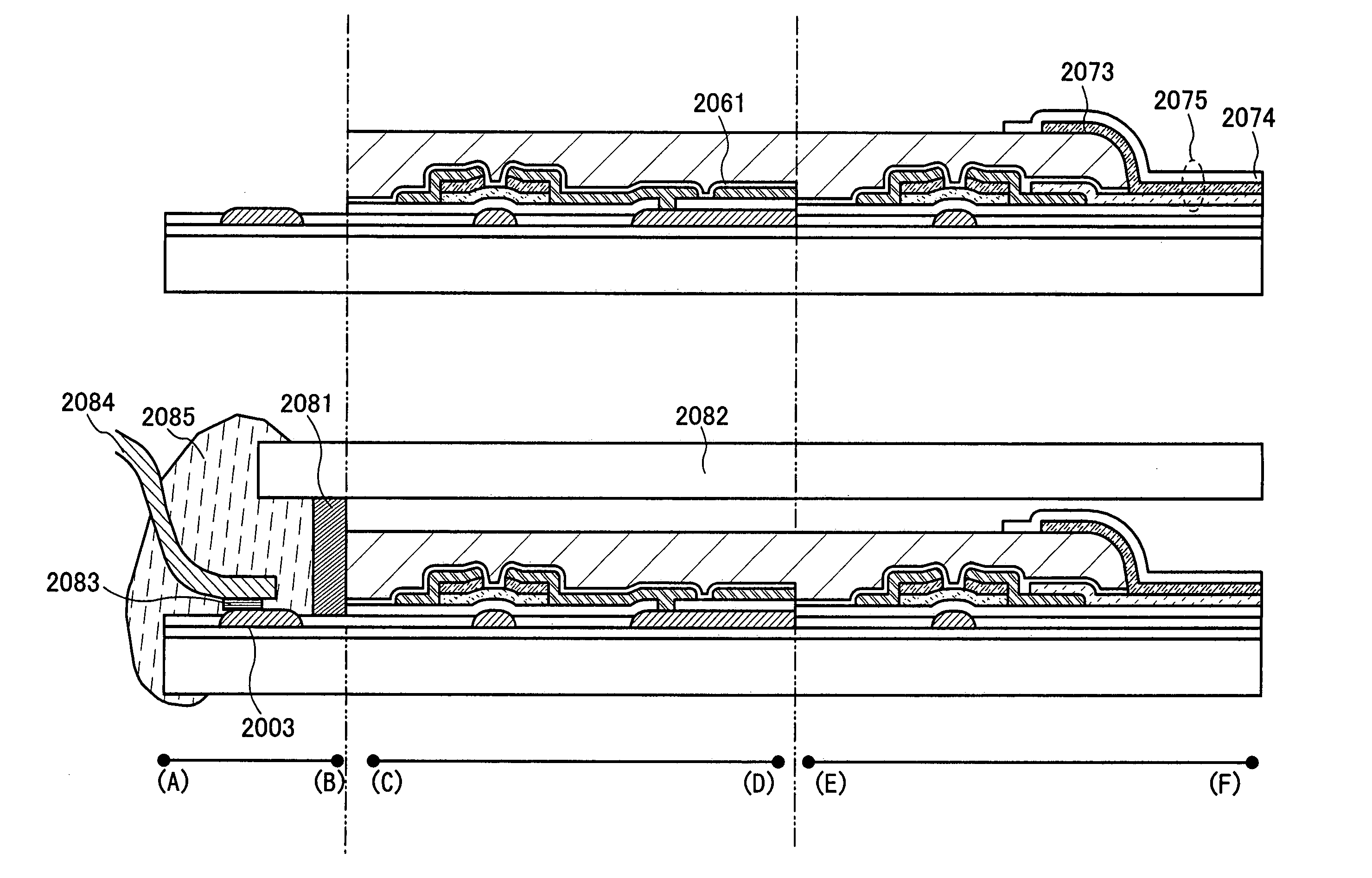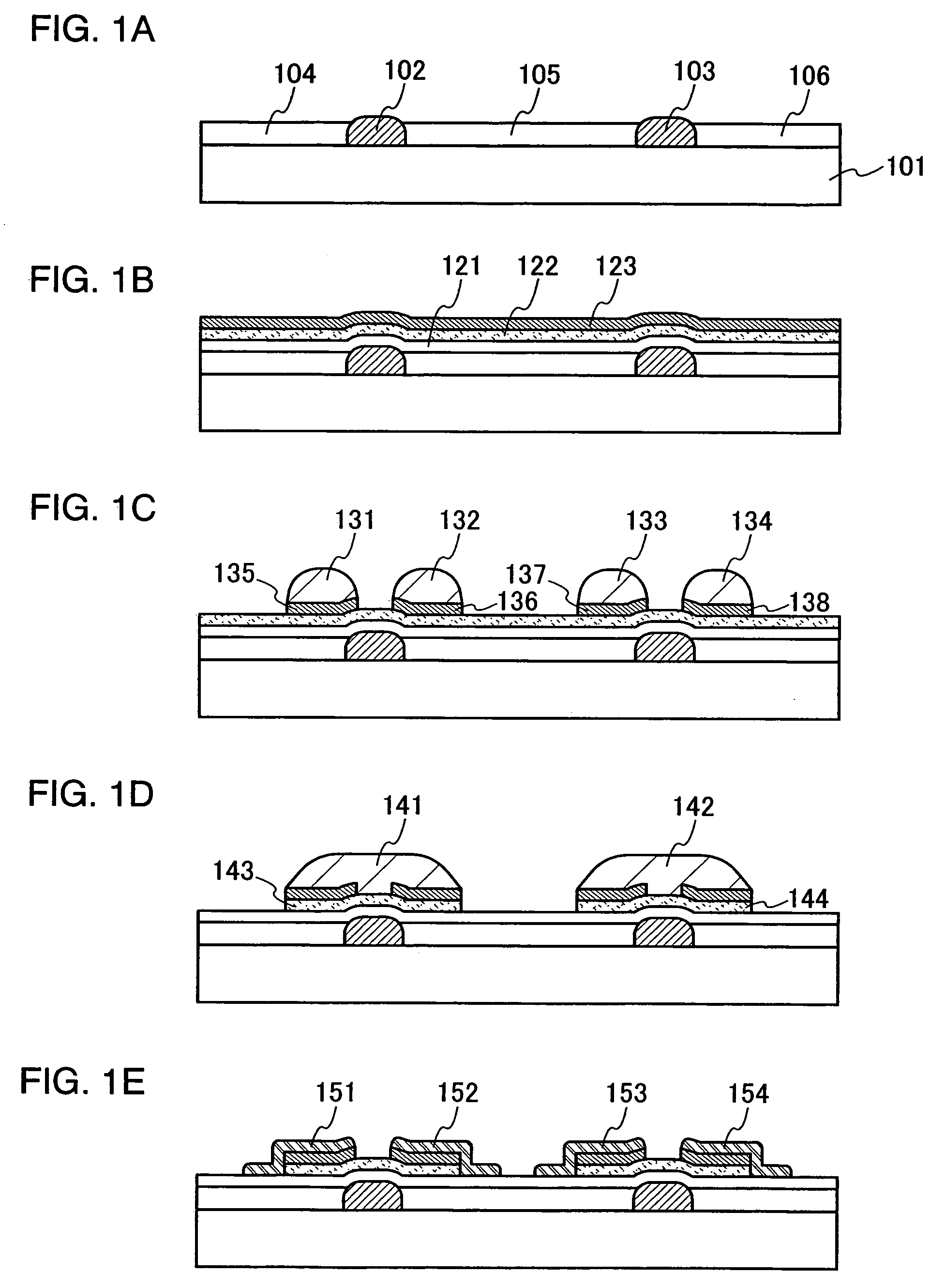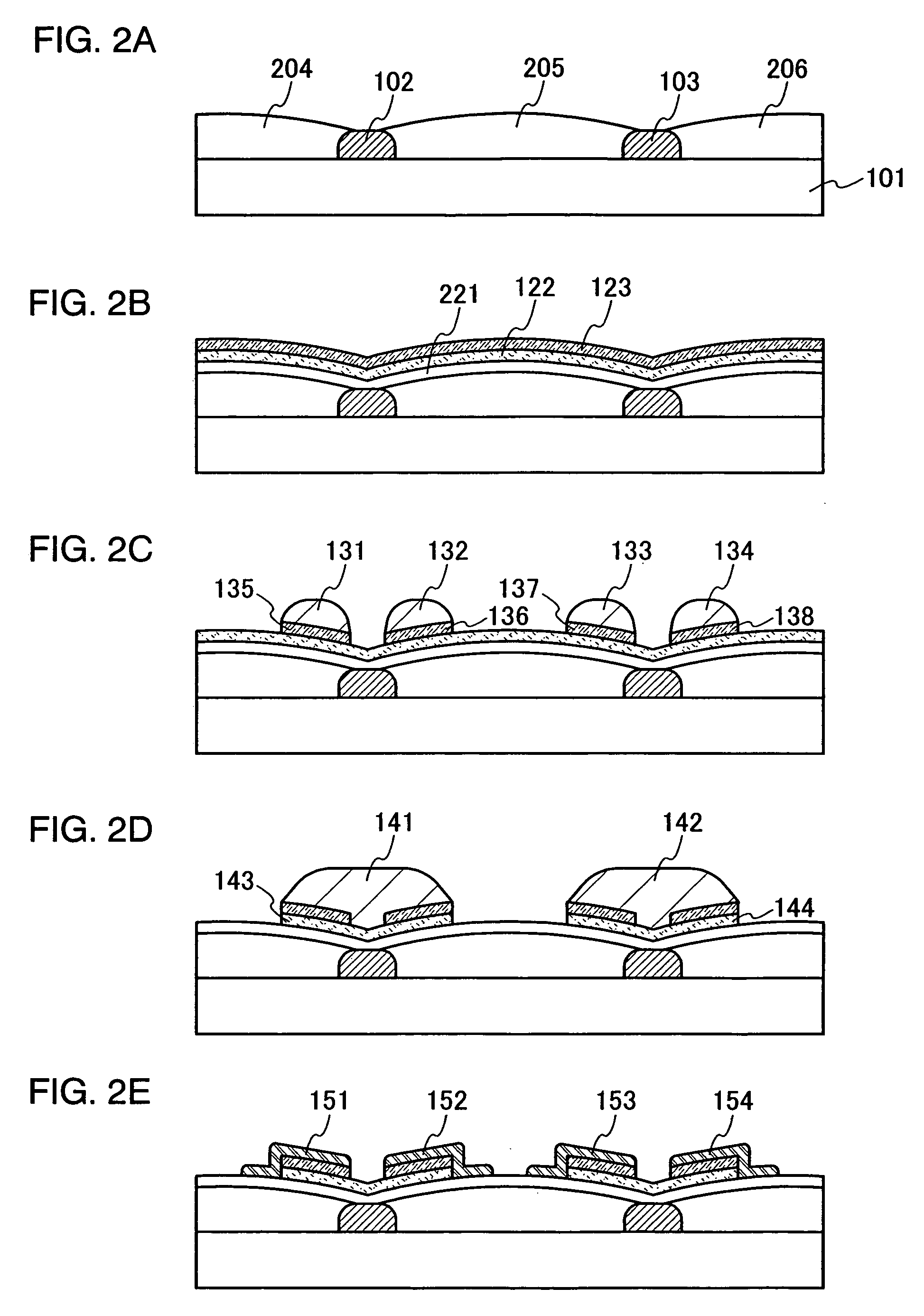Semiconductor device, method for manufacturing the same, liquid crystal television and EL television
a semiconductor and semiconductor technology, applied in the field of semiconductor devices, can solve the problems of deterioration of throughput, waste of gate electrode and resist materials, and difficulty in the use of exposure devices for photolithography process, and achieve the effect of high usability of materials
- Summary
- Abstract
- Description
- Claims
- Application Information
AI Technical Summary
Benefits of technology
Problems solved by technology
Method used
Image
Examples
embodiment 1
[0075]In this embodiment, a semiconductor device, which includes an insulating layer for filling between a plurality of conductive layers, and which has lower height than that of the conductive layers, and a manufacturing process of the semiconductor device are explained with reference to FIGS. 1A to 1E, 4A, 4B, 7A, and 39A. In this embodiment, a channel etch TFT is used in a bottom gate TFT as a semiconductor device.
[0076]As illustrated in FIG. 1A, a plurality of first conductive layers 102, 103 is formed over a substrate 101, and first insulating layers 104 to 106 are formed to fill between the plurality of the first conductive layers 102, 103.
[0077]As the substrate 101, a substrate made from an insulating substance such as glass, quartz, or alumina; a plastic substrate having heat resistance that can resist processing temperature in the following process; a silicon wafer, a metal plate, or the like can be used. In this instance, an insulating film for preventing impurities from d...
embodiment 2
[0122]In this embodiment, a process for manufacturing a semiconductor device in Embodiment 1 in which a first insulating layer has a larger thickness than that of a first conductive layer is explained with reference to FIGS. 2A, 2B, 7B, and 39B. In this embodiment, a channel etch TFT in a bottom gate TFT is explained as the semiconductor device.
[0123]As illustrated in FIG. 2A, first conductive layers 102, 103 are formed over a substrate 101 as is the case with Embodiment 1. Then, first insulating layers 204 to 206 are formed. The first insulating layers 204 to 206 have larger thicknesses than those of the first conductive layers 102, 103 and cover a part of the side and top of the first conductive layers 102, 103.
[0124]The first insulating layers 204 to 206 can be formed by the same material and the same method as those of the first insulating layers 104 to 106 in Embodiment 1.
[0125]As illustrated in FIG. 2B, a second insulating layer 221, a first semiconductor film 122, and a secon...
embodiment 3
[0132]The shapes of first conductive layers 102, 103 that can be applied to the present invention in Embodiment 1 or 2 are explained with reference to FIGS. 3A to 3E. This embodiment gives an explanation with Embodiment 2. Further, Embodiment 1 can also be appropriately used.
[0133]As illustrated in FIG. 3A, a conductive film having a tapered portion with a contact angle θ1 of 70 to 90° against a substrate 101 at an edge portion, that is, a conductive layer 301 is formed to have a cross-section in a trapezoidal shape, and first insulating layers 204, 205 are formed. Conventionally, there have been problems that a step coverage property of a film is deteriorated and stepped cut is produced with the increase of a contact angle in the case of the film is formed over a film pattern having a contact angle θ1 of 70° or more. However, the stepped cut of a film formed afterwards can be prevented and the uniformity of a film thickness can be improved by forming the first insulating layers 204...
PUM
 Login to View More
Login to View More Abstract
Description
Claims
Application Information
 Login to View More
Login to View More - R&D
- Intellectual Property
- Life Sciences
- Materials
- Tech Scout
- Unparalleled Data Quality
- Higher Quality Content
- 60% Fewer Hallucinations
Browse by: Latest US Patents, China's latest patents, Technical Efficacy Thesaurus, Application Domain, Technology Topic, Popular Technical Reports.
© 2025 PatSnap. All rights reserved.Legal|Privacy policy|Modern Slavery Act Transparency Statement|Sitemap|About US| Contact US: help@patsnap.com



